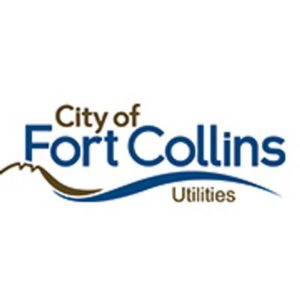
The City of Fort Collins' Front Range Smart Grid Development project involved the municipal utilities for the cities of Fort Collins and Fountain, Colorado. The project included citywide deployment of advanced metering infrastructure (AMI). AMI allowed for implementation of demand response products and pilot testing of time-based rate programs. With these devices and programs came customer education and web portal access. In addition, the project expanded distribution automation capabilities, including installation of supervisory control and data acquisition (SCADA) system-connected fault indicators and SCADA-connected remote-operated feeder switches.
Deployed Smart Grid Technologies
- Communications infrastructure: An expanded digital point-tomulti-point radio network runs from each substation and other points throughout the cities to meters and distribution automation devices, and enhancements were made to an existing fiber optic backhaul network from the substations to the utility operations center. This infrastructure provides the cities of Fort Collins and Fountain with expanded communication capabilities to better understand and integrate customer information, energy delivery system operations, and distribution system reliability information.
- Advanced metering infrastructure: The project deployed 85,328 advanced meters throughout the entirety of the cities of Fort Collins and Fountain as well as supporting information technologies and data management infrastructure. This system provides automated meter reading, improved long-term meter accuracy, enhanced outage detection, power quality monitoring, improved meter tampering detection, and remote connect/disconnect capabilities. A new meter data management system provides expanded capabilities to analyze, interpret, and query meter readings and interval power consumption information, which improves billing and electricity management efforts and load forecasting abilities.
- Advanced electricity service options: Fort Collins and Fountain have developed a portfolio of solutions to help reduce demand and energy consumption. The portfolio includes programmable communicating thermostats, inhome displays, web portal access, and direct load control devices that control water heaters and air conditioning equipment in homes and businesses. Customers in the cities of Fort Collins and Fountain who choose to enroll in the demand response programs may receive programmable communicating thermostats and/or load control switches, and participants as well as all other customers have access to a web portal that provides information on their electricity use.
- Time-based rate programs: The project enables the consideration of time-of-use pricing and a time-of-use rate with critical peak pricing. Time-of-use pricing, designed to encourage customers to reduce and/or shift their consumption from on-peak to off-peak periods, is being pilot tested. The expectation is that changes in consumer behavior will also reduce overall peak demand, greenhouse gas emissions, and costs of using power plant peaking generation units during times of peak system demand.
- Distribution automation systems: The project deployed automated switches, feeder power quality and fault monitoring equipment, and remote fault indicators integrated with the SCADA system on select distribution circuits.
Benefits Realized:
- Reduced operating and maintenance costs: AMI enables remote meter reading, allowing Fort Collins and Fountain utilities to save on costs associated with manual reads. Labor cost savings are estimated to be $623,000 per year, and vehicle cost savings are estimated to be $46,870 per year. In addition, the remote connect/disconnect functionality is projected to save $217,839 in labor costs per year
- Reduced greenhouse gas emissions: Remote meter reads also significantly decreases the utilities’ footprint, as emissions associated with manual meter reads are an estimated 36 metric tons per year lower.
- Deferred investment in distribution capacity expansion and reduced electricity usage: Fort Collins and Fountain project that direct load control will save the utilities $300,000 per year, thanks to reduced electricity usage and, in particular, peak usage. The latter also allows the utilities to defer new construction that would otherwise be needed to meet peak demand.
- Better customer service: Meter reading and billing accuracy has increased significantly, thanks to upgraded communications systems and available meter data. These advances not only improve customer service but also result in approximately $400,000 of annual savings.
- Improved electricity reliability and power quality and reduced costs from equipment failure: Distribution automation investments reduce the duration of service interruptions and field operations requirements. Thus, system reliability and power quality are targeted benefits of this upgrade. Having the capability to monitor for small, rapid fluctuations in grid voltage and current supports future implementation of distribution automation that can allow for increased penetration of distributed generation installed on or near residential and commercial buildings.
Lessons Learned
Fort Collins was able to leverage lessons learned from experiences of others who had implemented AMI projects earlier and add to that gained insight. The following are notable lessons learned:
- Project deployment success should not be defined by the limited number of “resistant” or “push-back” customers who have concerns or questions about program details. Deployment to this small group of customers was delayed to the end of the mass deployment, and these customer’s concerns addressed one by one to deployment closure.
- The timing of mass deployment should be avoided when confounding situations may cause customers to assume metering inaccuracies, e.g., after implementing tiered energy rates or prior to a peak-use summer cooling season. Fort Collins delayed meter deployment as needed, thus successfully avoiding this type of situation.
- Offering customer metering options helped address the concerns that a minority of customers had with respect to AMI metering health-related or privacy-related related issues.
- The use of knowledgeable and highly skilled consulting services was of great value. Consultants helped the project team make good decisions, work collaboratively with vendors and the public, and achieve overall project success.
- The project must be adequately resourced. AMI implementation is a significant effort that takes substantive time and involves many staff.
- Adequate IT resources are required for successful implementation.